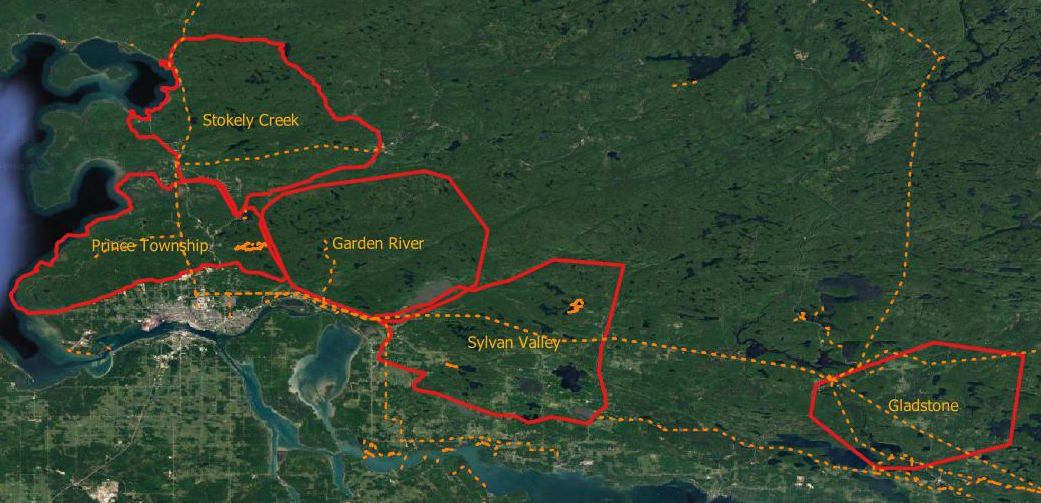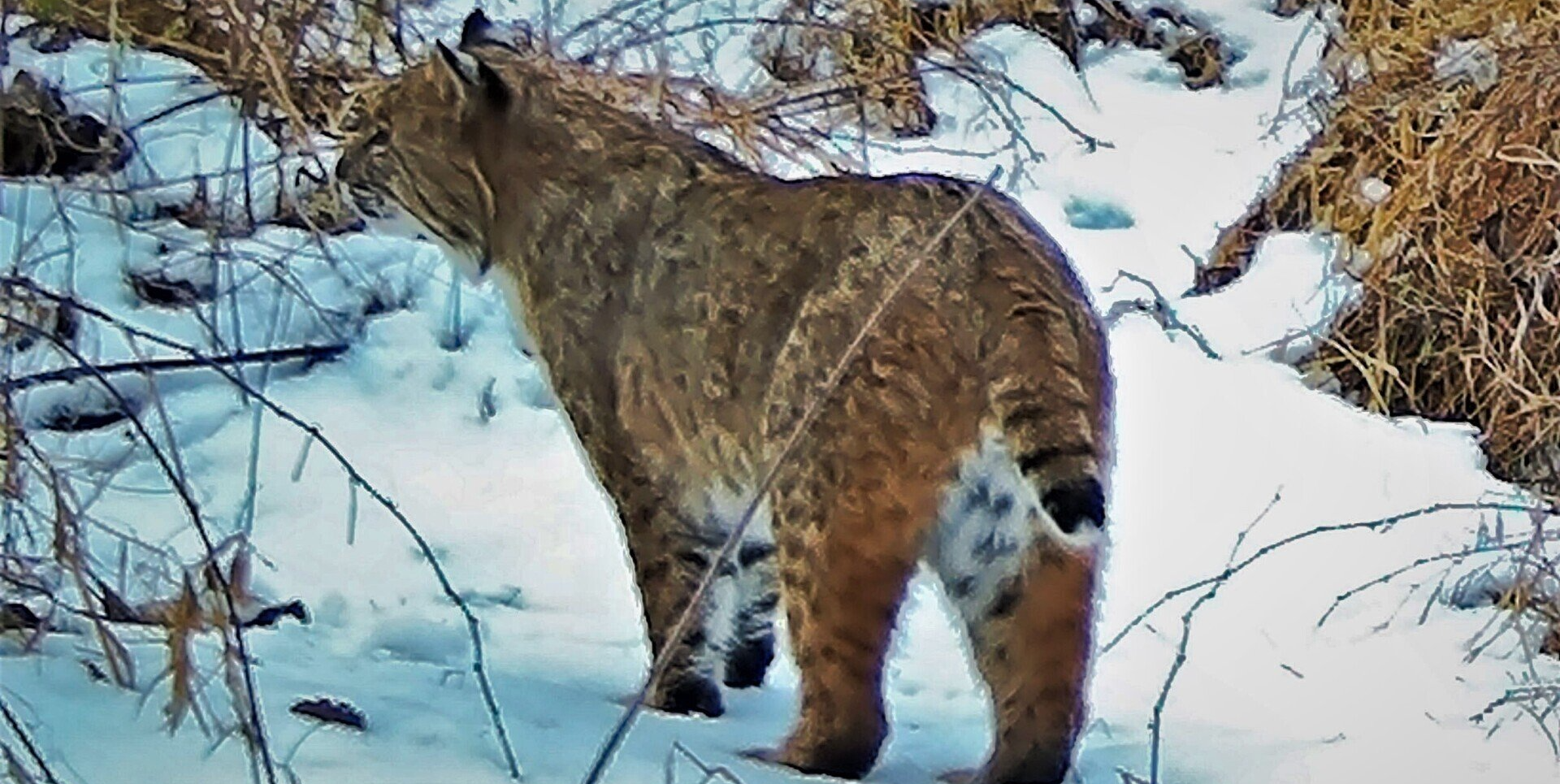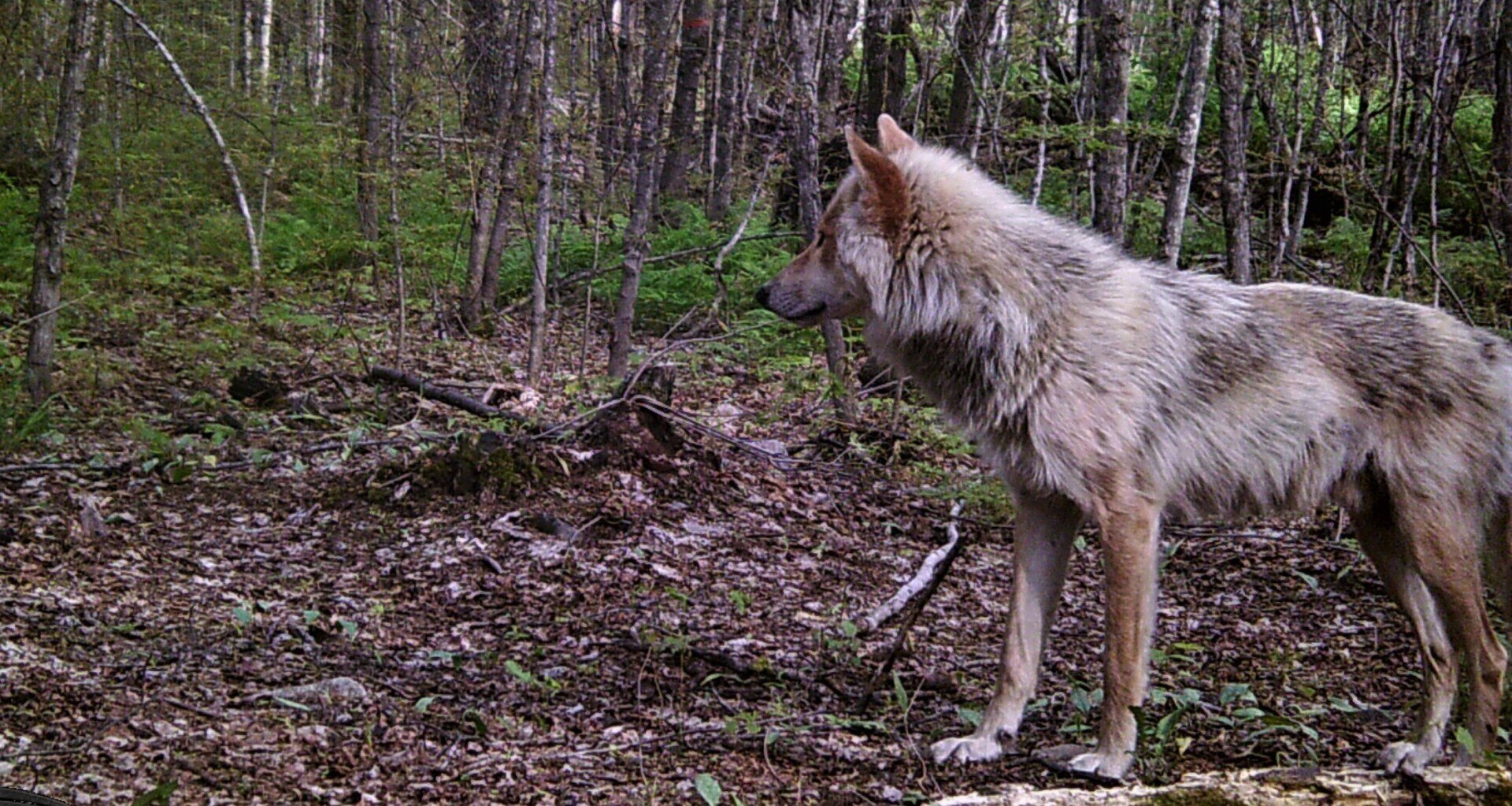Wildlife Research Project
About the Project
One of the four fundamental principles of the Algoma Highlands Conservancy (AHC) is to conserve the beauty and ecological integrity of the Algoma Region. Meeting this goal requires detailed knowledge of local flora and fauna. Within this context, our most recent ecological research initiative began in May 2021. Working directly with multiple collaborative partners, we initiated a 3-year wildlife research project with the purpose of learning as much as we can about how wildlife interacts with various human-made landscape features within the southern Algoma Region.

The five sites we have chosen for our project share similar landforms and contain a variety of manmade features, including high voltage transmission line corridors, extensive networks of forest roads and trails used by various outdoor enthusiasts. Across these five locations there are also some key differences, such as the presence of wind turbines in the Prince Township area, extensive agricultural land in the Sylvan Valley area and the vast network of silent sport recreational trails in the Stokely Creek area. All of these landscape variables are likely to influence habitat availability and use by various wildlife species both directly and indirectly through interactions that are not well understood.
Within these areas, we are actively gathering invaluable data on the presence and movements of various species such as moose, bear, fox, bobcat, wolves and coyotes by using a combination of ground observation, trail cameras, satellite telemetry and DNA analysis. These advanced technologies allow us to accurately identify and monitor local wildlife communities within our study sites, as well as focus on select key species such as the canids, which play a critical role as apex predators in healthy well-functioning ecosystems.
 Button
Button
Slide title
Write your caption hereButton
Slide title
Write your caption hereButton
Gaining a better understanding of how all of these wildlife species interact with one another, move through and use various habitats, and respond to human-induced changes in the landscape is fundamental to protecting ecosystem integrity, and ensuring future generations can see and appreciate these incredible creatures in their natural environment.
As you join us on this new adventure, we will begin by sharing unique insights into our most recent accomplishment; successfully radio collaring two female wolves, Fifi and Ruby. Following these two magnificent creatures on their travels is an exciting step towards learning more about the lives of local wildlife with whom we are sharing habitat.
Our project is made possible thanks to a passionate group of volunteers and strong collaborative partners.
You can learn more about our partners here.
The Algoma Highlands Conservancy is a not-for-profit organization created to protect the beauty and ecological integrity of King Mountain and Robertson Cliffs. Our lands offer an extensive network of trails that are open year-round for non-motorized recreational use.
The Algoma Highlands Conservancy is a not-for-profit organization created to protect the beauty and ecological integrity of King Mountain and Robertson Cliffs. Our lands offer an extensive network of trails that are open year-round for non-motorized recreational use.
Algoma Highlands Conservancy
Algoma Highlands Conservancy



